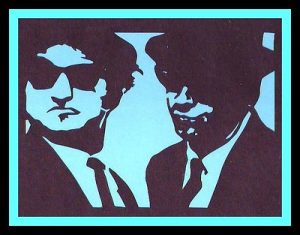
In 1968, Trump began his career at his father Fred’s real estate development company, E. Trump & Son, which, among other interests, owned middle-class rental housing in New York City’s outer boroughs.
Trump worked for his father to revitalise the Swifton Village apartment complex in Cincinnati, Ohio, which the elder Trump had bought in 1964. The management of the property was sued for racial discrimination in 1969; the suit “was quietly settled at Fred Trump’s direction.” The Trumps sold the property in 1972, with vacancy on the rise.
When his father became chairman of the board in 1971, Trump was promoted to president of the company and renamed it The Trump Organisation. In 1973, he and his father drew wider attention when the Justice Department contended in a lawsuit that their company systematically discriminated against African Americans who wished to rent apartments. The Department alleged that the Trump Organisation had screened out people based on race and not low income as the Trumps had stated. Under an agreement reached in 1975, the Trumps made no admission of wrongdoing and made the Urban League an intermediary for qualified minority applicants. Trump’s attorney at the time was Roy Cohn, who valued both positive and negative publicity, and responded to attacks with forceful counterattacks; Trump later emulated Cohn’s style.
Between the 80’s and 90’s he had many side ventures including the Trump Shuttle, Miss Universe, and television appearances.
Lawsuits and bankruptcies
As of April 2018, Trump and his businesses had been involved in more than 4,000 state and federal legal actions, according to a running tally by USA Today. As of 2016, he or one of his companies had been the plaintiff in 1,900 cases and the defendant in 1,450. With Trump or his company as plaintiff, more than half the cases have been against gamblers at his casinos who had failed to pay off their debts. With Trump or his company as a defendant, the most common type of case involved personal injury cases at his hotels. In cases where there was a clear resolution, Trump’s side won 451 times and lost 38.
Trump has never filed for personal bankruptcy, although in 1990 he came within one missed bank loan payment of doing so, agreeing to a deal that temporarily ceded management control of his company to his banks and put him on a spending allowance. Trump claimed to have initiated this deal with his banks as he saw the downturn in the real estate market, but bankers involved in the matter stated they initiated the negotiations before Trump had realized there was a problem. His hotel and casino businesses have been declared bankrupt six times between 1991 and 2009 in order to re-negotiate debt with banks and owners of stock and bonds.Because the businesses used Chapter 11 bankruptcy, they were allowed to operate while negotiations proceeded. Trump was quoted by Newsweek in 2011 saying, “I do play with the bankruptcy laws – they’re very good for me” as a tool for trimming debt. The six bankruptcies were the result of over-leveraged hotel and casino businesses in Atlantic City and New York: Trump Taj Mahal (1991), Trump Plaza Hotel and Casino (1992), Plaza Hotel (1992), Trump Castle Hotel and Casino (1992), Trump Hotels and Casino Resorts (2004), and Trump Entertainment Resorts (2009).
During the 1980s, more than 70 banks had lent Trump $4 billion, but in the aftermath of his corporate bankruptcies of the early 1990s, most major banks declined to lend to him, with a notable exception of Deutsche Bank.





